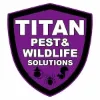For restaurant owners, the presence of pests is more than just a nuisance; but a serious threat to health, safety, and reputation. In the food service industry, even a single sighting of a rodent or insect can lead to failed inspections, loss of customers, or permanent damage to your brand. That’s why consistent pest control in restaurants is not optional. It’s a critical part of your business’s risk management and operational success.
This article outlines the key reasons why pest control is essential for restaurants, what signs to watch for, and how expert strategies can keep pests out of kitchens and dining areas year-round.

Common Pests That Threaten Restaurants
Restaurants create an ideal environment for pests. Warm temperatures, food waste, moisture, and constant foot traffic all contribute to the risk. Without proper control measures, common pests can quickly multiply and jeopardize sanitation.
Pests frequently found in restaurant settings include:
- Rodents: Mice and rats are drawn to food scraps and often nest behind appliances or in storage rooms.
- Cockroaches: Thrive in dark, moist spaces like drains and kitchen corners. They carry harmful bacteria and are hard to eradicate once established.
- Flies: Attracted to garbage, decaying food, and floor drains. They contaminate surfaces with every landing.
- Ants: Seek sugary or greasy residues in pantries and prep areas. Their colonies are often difficult to locate.
- Stored product pests: Beetles and moths can infest dry goods like flour, rice, and spices, ruining inventory.
A regular pest control program helps identify and intercept these threats before they spread, reducing the risk of contamination and food waste. For example, restaurants in urban settings should be particularly alert to early signs of a mouse infestation, which can be subtle until significant damage occurs.
Health Risks and Legal Liabilities
Health departments enforce strict regulations when it comes to pest control in restaurants. A single violation during an inspection can lead to fines, shutdowns, or loss of licenses. More importantly, pests pose real health threats to customers and staff alike.
Health risks include:
- Transmission of foodborne illnesses such as Salmonella, E. coli, and Listeria
- Allergic reactions triggered by insect droppings or body parts
- Contamination of food prep surfaces, utensils, and stored inventory
- Risk of bites or direct contact in severe infestations
Failing to address pest activity promptly can also create liability in the event a customer falls ill or a viral video exposes sanitation issues. Prevention is not just best practice but a legal safeguard that protects your staff, your guests, and your business.
How Routine Pest Control Programs Work
An effective pest control plan is not a one-time fix. Restaurants require continuous monitoring and proactive treatment to remain pest-free year-round. Professional pest control companies typically tailor their programs to meet the unique needs of commercial kitchens and dining spaces.
Routine service generally includes:
- Scheduled inspections: Technicians visit regularly to inspect high-risk zones like storage rooms, dumpsters, floor drains, and behind equipment.
- Targeted treatments: Safe, food-industry-approved products are applied where pest activity is likely or confirmed.
- Exclusion work: Small entry points are sealed to prevent rodents or insects from gaining access.
- Sanitation consultations: Experts provide advice on reducing attractants like moisture, grease buildup, or improper waste storage.
- Detailed reporting: Each visit includes documentation to satisfy health inspectors and management audits.
By using professional services, restaurant operators gain peace of mind knowing their pest control approach is thorough, compliant, and constantly evolving with seasonal patterns and regulatory standards.
Key Prevention Practices for Restaurant Staff
While pest control professionals handle the heavy lifting, restaurant staff play a critical role in keeping the environment inhospitable to pests. A culture of cleanliness and vigilance goes a long way in minimizing risk between service visits.
Staff can help prevent pest issues by:
- Wiping down counters and cleaning up food spills immediately
- Storing dry goods in sealed, pest-proof containers
- Emptying trash bins daily and keeping dumpster areas clean
- Reporting signs of pest activity promptly to management
- Avoiding food debris buildup in drains, under equipment, or in corners
Incorporating pest-conscious habits into daily routines reduces food sources and nesting opportunities. Restaurants that keep pests away consistently tend to have stronger inspection outcomes and more loyal customer bases.
Why Professional Support Matters
DIY pest solutions like sprays or traps may offer temporary relief, but rarely solve the root problem. Restaurants face higher stakes and stricter regulations than homes, which makes professional pest management essential.
Benefits of hiring a licensed pest control provider include:
- Compliance with food safety and sanitation regulations
- Access to commercial-grade tools and treatments
- Monitoring of trends and emerging pest pressures
- Emergency response if sudden infestations occur
- A clear record of preventive actions for inspectors
Without expert oversight, even clean kitchens can fall prey to infestations due to building design, external factors, or nearby construction. A well-managed pest control program ensures long-term safety and reliability.
Protect Your Kitchen’s Reputation
Pest control in restaurants is not just about avoiding pests: it’s about safeguarding your reputation, ensuring food safety, and staying legally compliant. To build a program that fits your restaurant’s needs, contact Titan Pest & Wildlife Solutions and let trained professionals create a custom strategy that keeps pests off the menu for good.

